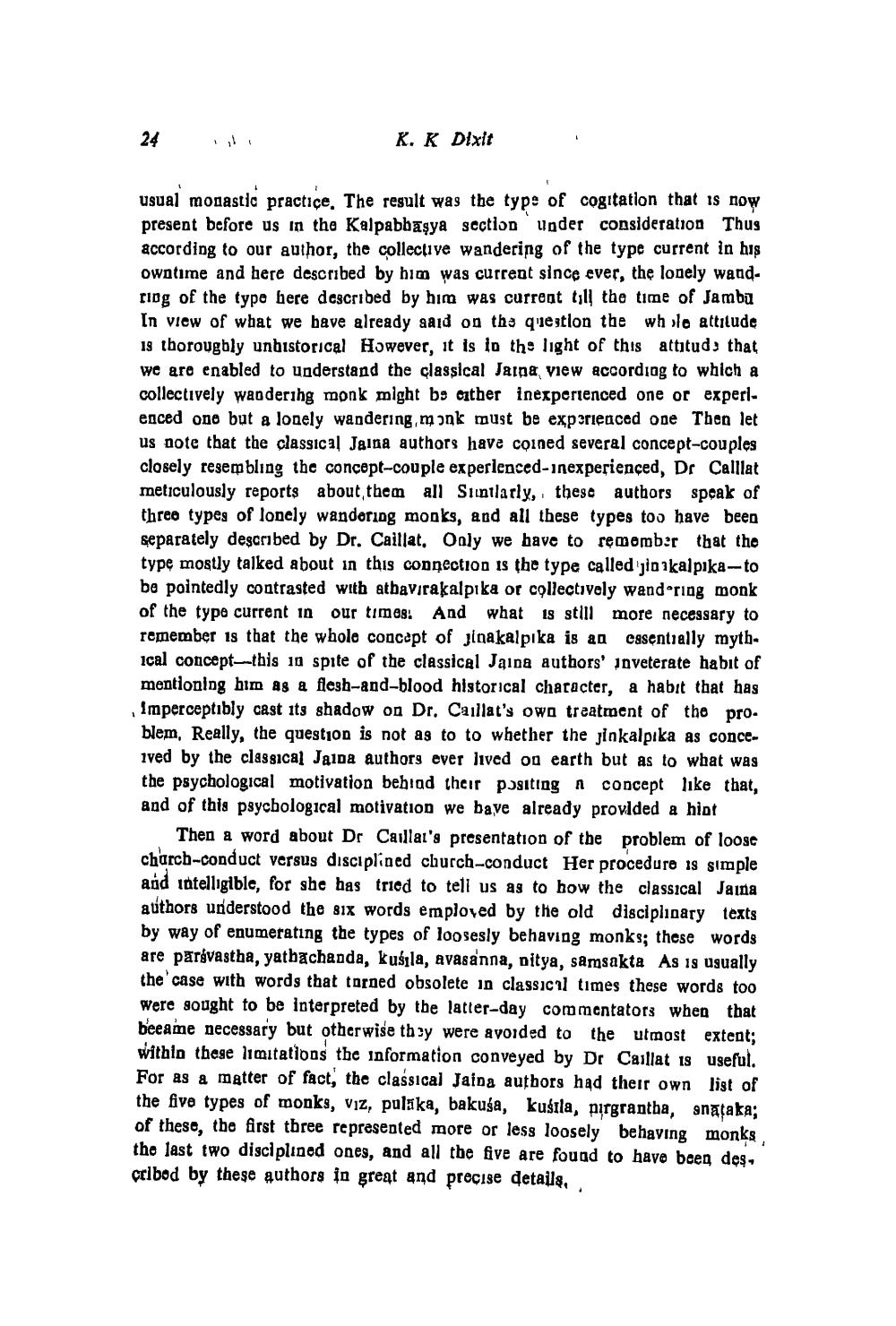________________
24
K. K Dixit
usual monastic practice. The result was the type of cogitation that is now present before us in the Kalpabbasya section under consideration Thus according to our author, the collective wandering of the type current in his owntime and here described by him was current since ever, the lonely wandring of the type here described by him was current till the time of Jambu In view of what we have already said on the question the whole attitude 13 thoroughly unhistorical However, it is in the light of this attitude that we are enabled to understand the classical Jarna, view according to which a collectively wandering monk might be either inexperienced one or experienced one but a lonely wandering, monk must be experienced one Then let us note that the classical Jaina authors have coined several concept-couples closely resembling the concept-couple experienced-inexperienced, Dr Calllat meticulously reports about them all Similarly, these authors speak of three types of lonely wandering monks, and all these types too have been separately described by Dr. Caillat, Only we have to remember that the type mostly talked about in this connection is the type called jinakalpika-to be pointedly contrasted with athavirakalpika or collectively wandering monk of the type current in our times. And what is still more necessary to remember is that the whole concept of jinakalpika is an essentially mythical concept-this in spite of the classical Jaina authors' inveterate habit of mentioning him as a flesh-and-blood historical character, a habit that has Imperceptibly cast its shadow on Dr. Caillat's own treatment of the problem, Really, the question is not as to to whether the jinkalpika as conceived by the classical Jaina authors ever lived on earth but as to what was the psychological motivation behind their positing a concept like that, and of this psychological motivation we bave already provided a hint
Then a word about Dr Caillat's presentation of the problem of loose church-conduct versus disciplined church-conduct Her procedure is simple and intelligible, for she has tried to tell us as to how the classical Jaina authors understood the six words employed by the old disciplinary texts by way of enumerating the types of loosesly behaving monks; these words are parivastha, yathachanda, kusila, avasanna, nitya, samsakta As is usually the case with words that turned obsolete in classical times these words too were sought to be interpreted by the latter-day commentators when that became necessary but otherwise they were avoided to the utmost extent; within these limitations the information conveyed by Dr Caillat is useful. For as a matter of fact, the classical Jaina authors had their own list of the five types of monks, viz, pulaka, bakuśa, kusila, pirgrantha, snaṭaka; of these, the first three represented more or less loosely behaving monks the last two disciplined ones, and all the five are found to have been des cribed by these authors in great and precise details.




